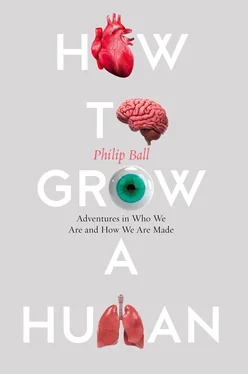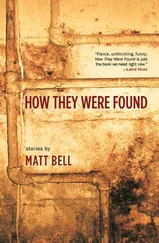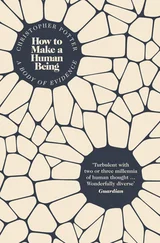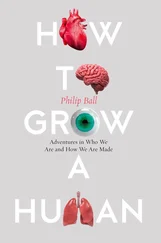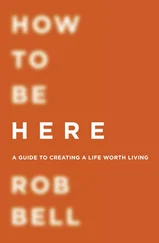Having your skin grown into neurons that assemble themselves into a brain organoid is a pretty convincing way to find out how obsolete that notion is. All the more so when you see it through the microscope and realize that this is not merely some trick of preservation. Life on that scale is multitudinous, and thriving, and it has a plan of sorts.
Life? Whose life?
Not mine, exactly – and yet who else’s can it be? Those cells are autonomous – but why any more so than the cells still in my arm, in my real brain (the need for that specifying adjective still makes me blink), my surging blood and beating heart? And so I come by degrees to accept the inevitable truth: I am a colony of cells, whose cooperation lets me draw breath, whose communication produces my sense of identity and uniqueness.
That is what is fundamentally disconcerting about our own flesh. It grew as a colony from a single cell, and we’re not quite sure where (or when) in this teeming morass to pin the label “me”.
The new cell technologies are making it impossible for us any longer to ignore this fact. I won’t pretend that I know how to normalize it, but I think there is a strange kind of liberation that can come from letting ourselves be unsettled by it.
CHAPTER 1
PIECES OF LIFE
CELLS PAST AND PRESENT
“ Ex ovo omnia .”
So declared the frontispiece of Exercitationes de generatione animalium (1651) by the seventeenth-century English physician William Harvey, sometime physician to James I. It expressed a conviction (and no more) that all things living come from an egg.

William Harvey’s motto “All things from an egg” in the frontispiece of his 1651 treatise on the “generation of animals”.
It’s not really true: plenty of living organisms, such as bacteria and fungi, do not begin this way. But we do. (At least, we have done so far. I no longer take it for granted that this will always be the case.)
“Egg” is an odd term for our generative particle, and indeed Harvey was a little vague about what he meant by it. Strictly speaking, an egg is just the vessel that contains the fertilized cell, the zygote in which the male genes from sperm are combined with the female genes from the “egg cell” or ovum. Yet it’s easy to overlook how bold a proposal Harvey was making, in a time when no one (himself included) had ever seen a human ovum and the notion that people might begin in a process akin to that of birds and amphibians could have sounded bizarre.
The truth of Harvey’s insight could only be discerned once biology acquired the idea of the cell, the fundamental “atom of biology”. That insight is often attributed to Harvey’s compatriot and near-contemporary Robert Hooke, who made the most productive use of the newly invented microscope in the 1660s and ’70s. Hooke discerned that a thin slice of cork was composed of tiny compartments that he called “cells”. This is often said to be an allusion to the cloistered chambers (Latin cella : small room) of monks, but Hooke drew a parallel instead with the chambers of the bee’s honeycomb, which in turn probably derive from the monastic analogy.
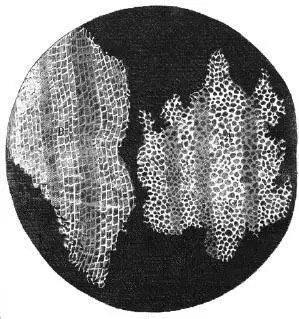
Robert Hooke’s sketch of cells in cork, as seen in the microscope.
The popular notion that Hooke established the cellular basis of all living things is wrong, however. Hooke saw cells, for sure – but he had no reason to suppose that the fabric of cork had anything in common with human flesh. In fact, Hooke imagined that cork cells are mere passages for transporting fluids around the cork tree. The cell here is just a passive void in the plant’s fabric, a very different notion from the modern concept of an entity filled with the molecular machinery of life.
More provocative were the observations of the Dutch cloth merchant Antonie van Leeuwenhoek in 1673 that living organisms can be of microscopic size. Leeuwenhoek saw such “animalcules” teeming in rainwater – mostly single-celled organisms now called protists, which are bigger than most bacteria. You can imagine how unsettling it was to realize that the water we drink is full of these beings – although not nearly so much so as the dawning realization that bacteria and other invisibly small organisms are everywhere: on our food, in the air, on our skin, in our guts.
Leeuwenhoek contributed to that latter perception when he discovered animalcules in sperm. That was one of the substances that the secretary of London’s Royal Society, Henry Oldenburg, suggested the Dutchman study after receiving his communication on rainwater. Leeuwenhoek looked at the semen of dogs, rabbits and men – including his own – and observed tadpole-like entities that “moved forward with a snake like motion of the tail, as eels do when swimming in water.” Were these parasitic worms? Or might they be the very generative seeds themselves? They were, after all, absent in the sperm of males lacking the ability to procreate: young boys and very old men.
Here we can see the recurrent tendency to impose familiar human characteristics on what is evidently “of us” but not “like us”. The French physician Nicolas Andry de Boisregard, an expert on tiny parasites and a microscope enthusiast, claimed in 1701 that “spermatic worms” could be considered to possess the formative shape of the fetus: a head with a tail. In 1694, the Dutch microscopist Nicolaas Hartsoeker drew a now iconic image of a tiny fetal humanoid with a huge head tucked up inside the head of a spermatozoa: not, as sometimes claimed, a reproduction of what he thought he could see, but a figurative representation of what he imagined to be there.

The “homunculus” in sperm, as imagined by Nicolaas Hartsoeker.
This was one of the most explicit expressions of the so-called preformationist theory of human development, according to which the human body was fully formed from the very beginning of conception and merely expands in size: an extrapolation down to the smallest scale of the infant’s growth to adulthood. According to this picture, the female egg postulated by Harvey continued to be regarded in the prejudiced way in which Aristotle had perceived the woman’s essentially passive role in procreation: it was just a receptacle for the homunculus supplied by the man.
That was, though, a different view to the one Harvey envisaged, in which the body developed from the initially unstructured egg. Harvey, like Aristotle, thought that semen triggered this process of emergence, which Aristotle had imagined as a kind of curdling of a fluid within the female. The idea that the embryo unfolds in this way, rather than simply expands from a preformed homunculus, was known as epigenesis . These rival views of embryo formation contended until studies with the microscope, particularly investigations of the relatively accessible development of chicks inside the egg, during the eighteenth and early nineteenth century put paid to the preformation hypothesis. Embryos gradually develop their features, and the question for embryologists was (and still is) how and why this structuring of the tissues comes about.
* * *
The observations of early microscopists did not, then, engender a belief that life is fundamentally cellular. That cells are a general component of living matter was not proposed until the early nineteenth century, when the German zoologist Theodor Schwann put the idea forward. “There is one universal principle of development for the elementary parts of organisms,” he wrote in 1839, “and this principle is in the formation of cells.”
Читать дальше
